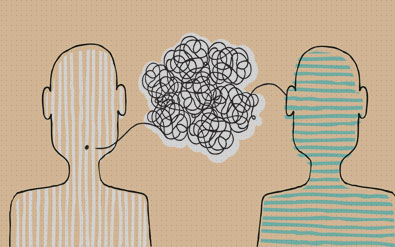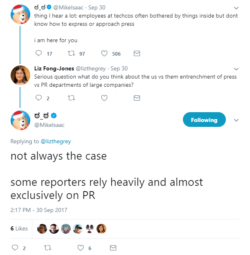Share This
By: Zachary Vito, Senior Account Executive, MSR Communications
For anyone involved in editorial work, it is important to develop relationships with influencers and reporters outside of the office. But this doesn’t mean you have to physically leave the office.
We’ve all heard the sirens and warning calls that Twitter is dying, but it is still the place where many of your peers are hanging out (virtually). By following writers on Twitter, ones that you hope to work with in an editorial capacity, you will gain insight into their interests, tastes and even preferences for how to work with PR professionals.
I’ve learned and been reminded of some important PR best practices because I follow some of my favorite writers on Twitter. Yes—some of these tweets from reporters about their experiences with PR people are quite cringe-worthy, as in “I can’t believe someone would do that,” but it is important to remind ourselves of what reporters have to deal with on a daily basis.
By paying attention to what journalists are saying today, you can gain expert insight into the best ways to work with them as well as better prepare yourself to make recommendations when planning media outreach strategies. I’ve collected a handful of some of my favorite Tweets from journalists that serve as good reminders for how to best do our job:
Mike Isaac, Technology Reporter, New York Times (@MikeIsaac)
As Mike points out, some reporters don’t hate your guts, but actually welcome your pitches and rely on you to a certain extent. By exercising a little due diligence, you can separate these reporters from feature writers, etc., and be more efficient in your outreach. For example, if you are pitching a press release, look for the writers and news editors that clearly cover press release announcements, which should be apparent from a quick glance at their past coverage. Save feature pitches for the reporters who write in-depth, long form articles, company profiles, etc.
Cecilia Kang, Technology Reporter, New York Times (@ceciliakang)
There are a few takeaways from Cecilia here. In case this wasn’t already obvious for you, PR professionals should always respect writers’ privacy and never contact via personal communication channels unless the writer offers.
When it comes to making follow-up calls, you might want to think twice before picking up the phone because chances are the reporter saw your email, and chose not to respond, so you will further annoy them by calling.
Finally, no matter how desperate you might be for coverage of your announcement, it is not to your advantage to make the news seem any more urgent than it actually is. While this is the essence of PR to a certain extent, as Cecilia points out, this puts your credibility at jeopardy with the reporter, so when you do actually have juicy news, they will be less likely to trust your pitch.
Alex Konrad, Staff Writer, Forbes (@alexrkonrad)
Never double (or in this case triple) pitch the same reporter. PR professionals working with multiple clients may run into this dilemma of finding an opportunity to pitch two clients to the same reporter. A well-organized media list is crucial to avoid double pitching contacts as is communication with the rest of your team. Occasionally, it might be best to look for an opportunity to combine both clients into the same pitch, especially if it is a feature pitch. The idea here is that you are offering multiple expert spokespeople to the reporter who can speak to different aspects of the same story, all in one pitch, which makes their job of hunting down additional sources easier.
Ben Kepes, Freelance (@benkepes)
As Ben says here, respect is a two-way street. Even if a reporter sends you a “no thanks” reply, that is still valuable feedback for you to bring to the client because a.) You have proof that the reporter considered the pitch, which you can track in your reporting metrics and b.) It is an opportunity for you to engage in dialogue with the reporter. If you truly believe the pitch is something the reporter should look into, maybe you didn’t get it right in your fist pitch so take the opportunity to ask them for details on why they declined the pitch, which might give you better insight for the next one.









